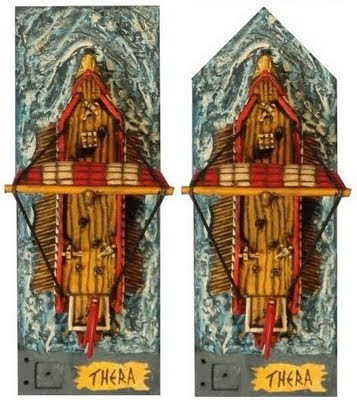Bien, las bases definitivas para Impetus Navalis serán éstas. Al final hemos optado por dejar que sean los jugadores quienes eligan el tipo de base que quieren utilizar, siempre que ambos jugadores utilicen las mismas bases. Las reglas serán compatibles con la mayoría de bases existentes, sin embargo la descripción de las reglas estará orientada a uno de estos dos tipos: las peanas rectangulares, que son las más frecuentes, o las peanas con el frente recortado en ángulo de 90º, para favorecer el contacto en la embestida y el cálculo de ángulos.
 Well, the final Impetus Navalis bases will be these. In the end we opted to let the players the choice of base type they want to use, as long as both players use the same basis. The rules are compatible with most existing bases, but the description of the rules will be directed to one of these two types: the rectangular base, which is the most frequent, or bases with the front cut at 90 º to encourage ram contacts and angles calculation.
Well, the final Impetus Navalis bases will be these. In the end we opted to let the players the choice of base type they want to use, as long as both players use the same basis. The rules are compatible with most existing bases, but the description of the rules will be directed to one of these two types: the rectangular base, which is the most frequent, or bases with the front cut at 90 º to encourage ram contacts and angles calculation.Nos vemos!



